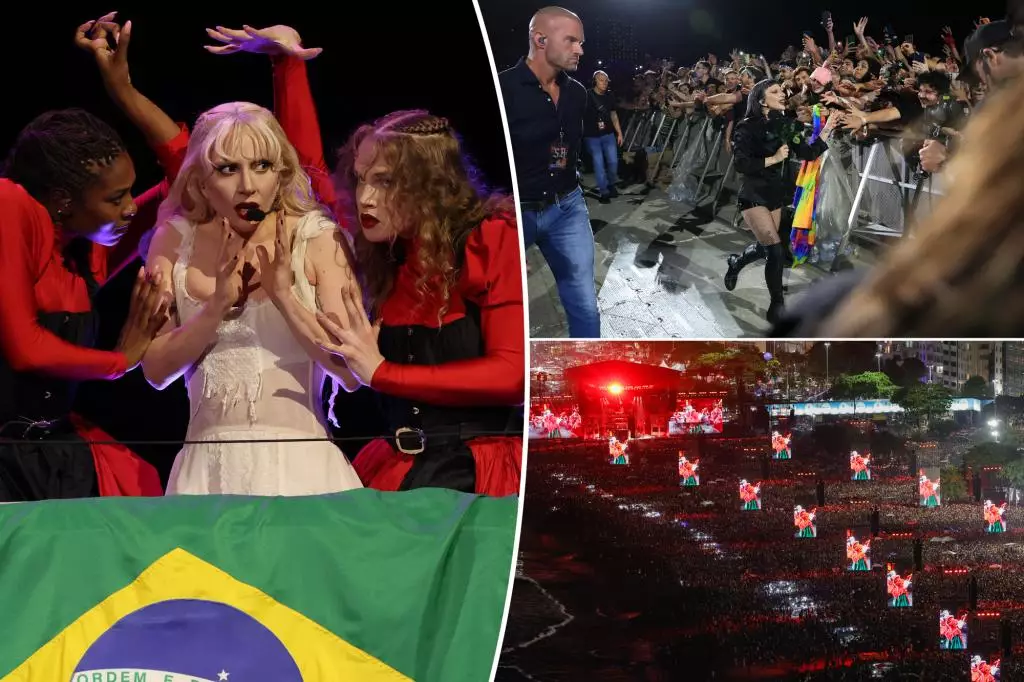Lady Gaga’s recent concert at Rio de Janeiro’s Copacabana Beach was an anticipated spectacle that transformed into a tale of resilience against heinous plots. It was not just another night of captivating music and dance; it was a moment that came perilously close to devastation. Local authorities revealed that an extremist group, masquerading as her devoted fans—dubbed the “Little Monsters”—was reportedly planning a bomb attack during the event. Such attempts to exploit the purity of her art underscore a dark facet of modernity: how fanaticism can corrode the joy that cultural symbols provide.
Reports from Brazilian police indicated that this group aimed to recruit the vulnerable, including minors, to execute violent attacks using improvised explosives and incendiaries. This chilling reality brought to light the potential targeting of youth in radicalization schemes, raising concerns about exploitation of innocence in the name of ideological warfare. The use of coded language and extremist rhetoric within such gatherings complicates the dynamics of public events that are meant to celebrate love and acceptance, the very ethos that Gaga embodies in her artistry.
The Response and Aftermath
While authorities acted swiftly once the threat was unearthed, the concert organizers, including Gaga’s team, faced significant backlash for not being informed ahead of time. Given the gravity of the situation, the lack of direct communication from law enforcement raises questions about operational efficacy in threat management within concert environments. Why were safety precautions not relayed earlier? This serves as a critical reminder that as public figures gather masses, ensuring their safety along with the audience’s becomes paramount.
Despite the looming threat, Gaga’s performance prevailed, captivating an audience of approximately 2.5 million—an astounding feat marking the largest crowd for any female artist in history. In her reflection on the experience, she shared her elation through an Instagram post, emphasizing the emotional connection formed with her Brazilian fans. This sentiment resonated deeply, showcasing her capacity to transform extreme adversity into a moment of profound gratitude.
Empowerment Through Community
Gaga’s response, while brimming with joy for her fans, could not overshadow the disquiet of the conspiracy that unfolded. A stark reminder of how art can be a double-edged sword—while it fosters community and empowerment, it also attracts those who seek to exploit it for malicious intent. The true strength of any artist lies in their ability to stand resilient against such threats, transcending fear through the universal language of music and love.
In this context, Gaga’s artistry remains a beacon. The resilience shown by both the artist and her supporters illuminates an essential truth: the arts can arise from the ashes of chaos, delivering messages of hope and solidarity. In an age where violence threatens to dampen communal spaces, Gaga stands as a testament to the transformative power of unity, reminding us that love is far stronger than hate. This concert was not merely a musical event; it became a powerful declaration of defiance against oppression and negativity.

